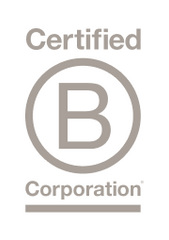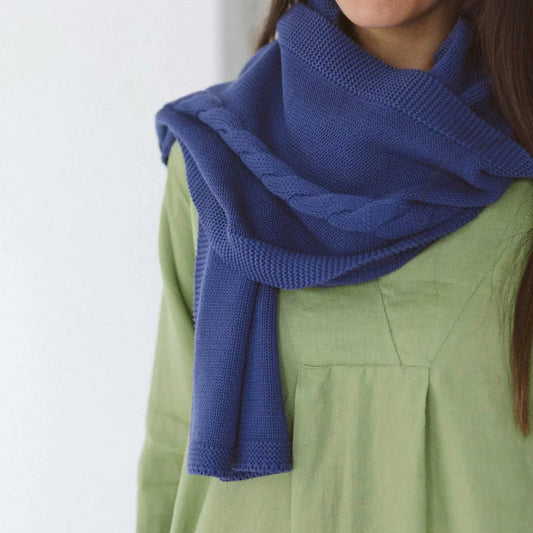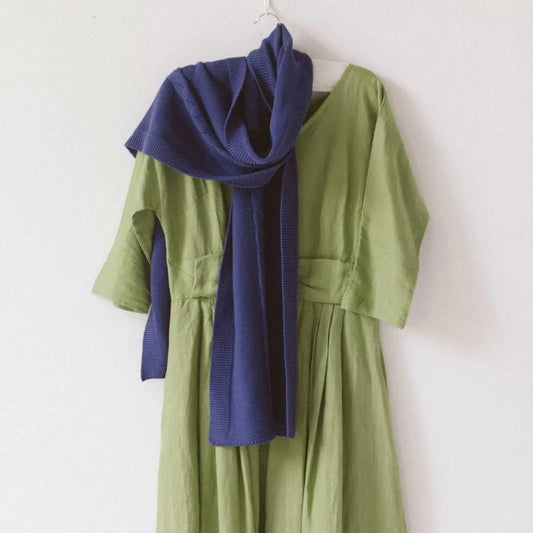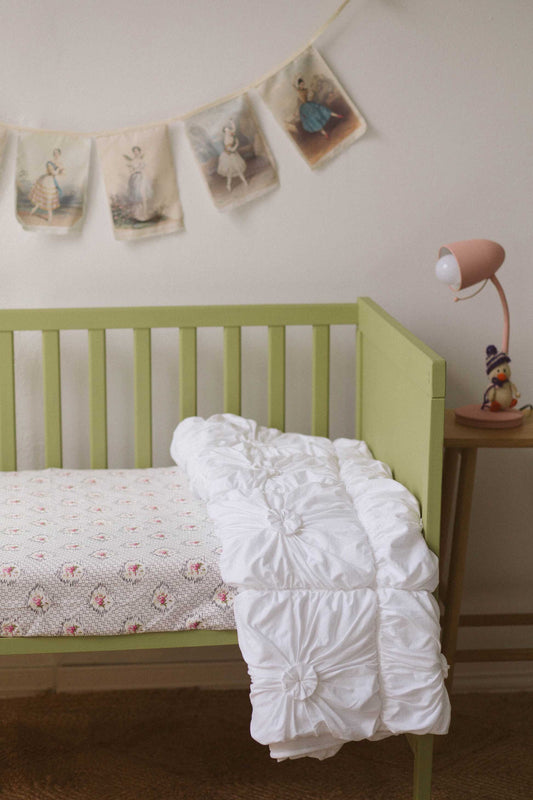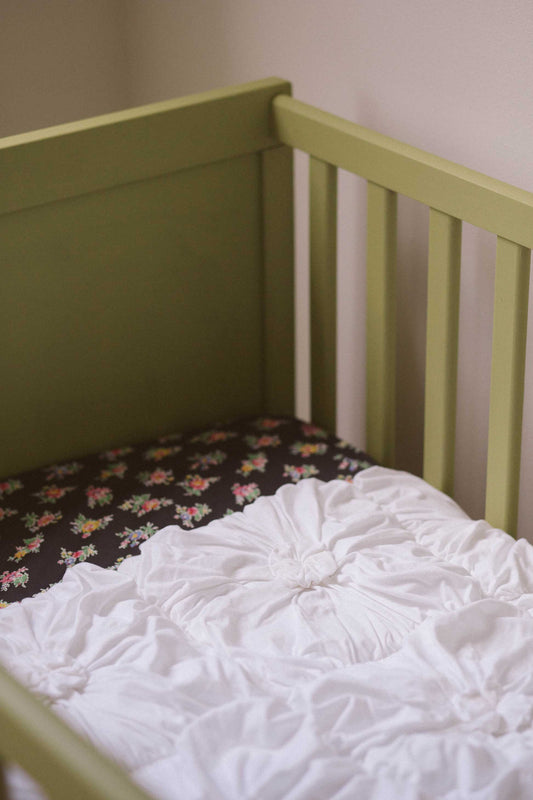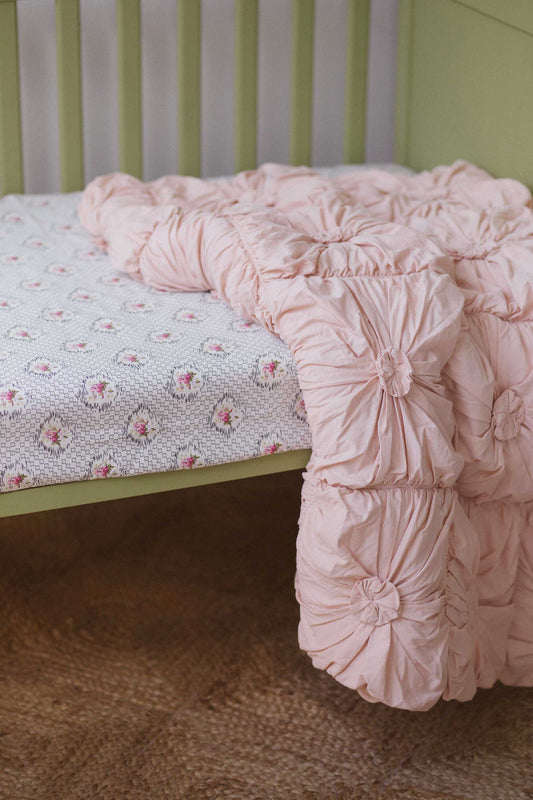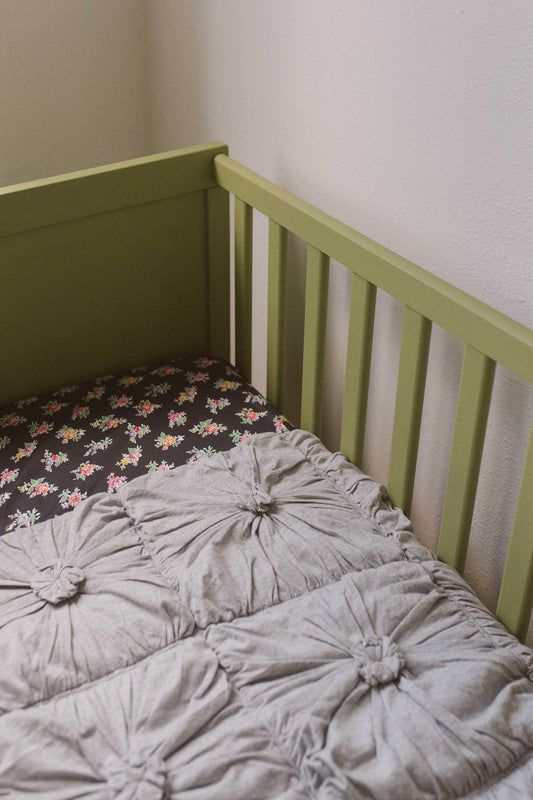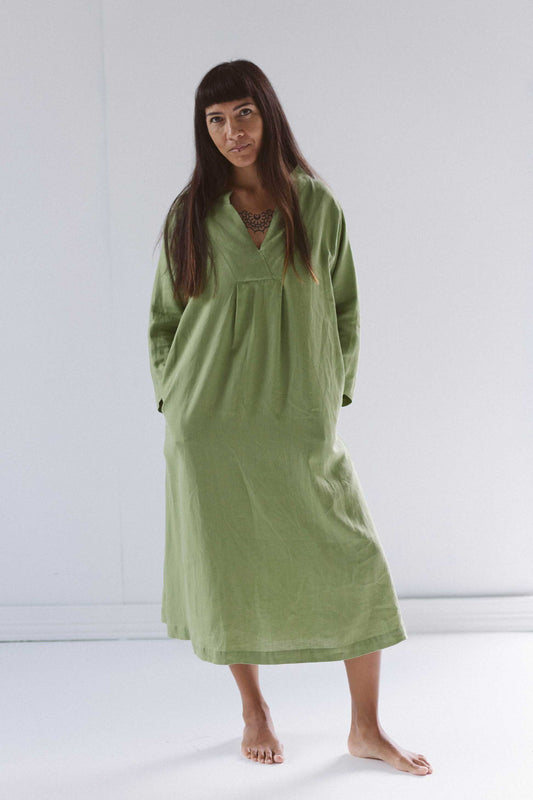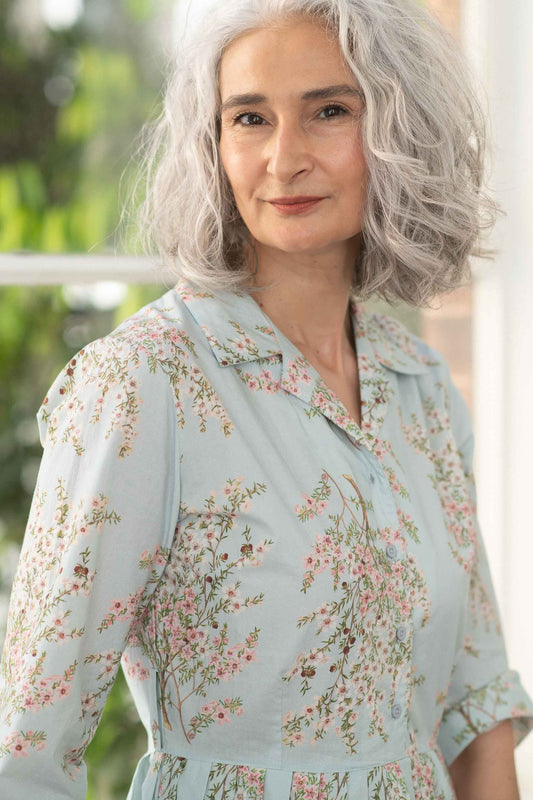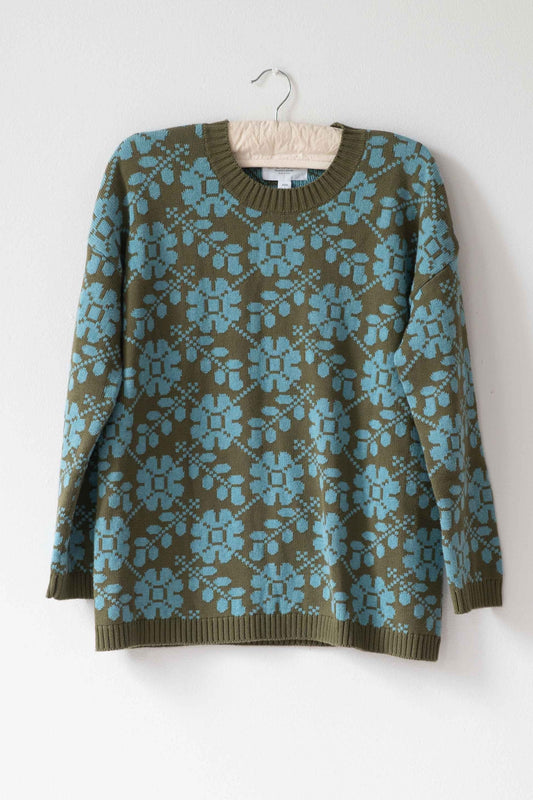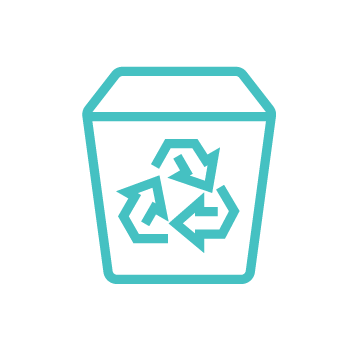 The environmental devastation happening in Asia due to incessant demand for palm oil is thankfully coming out in the open, as are its dire consequences for our entire planet, including global warming. We all need to take action to help solve the problem, starting with awareness of which products actually use palm oil as a building block. In this article we shine a light on how palm oil is used to make the products we use to moisturise our skin; the ingredients to look for; and what you can do to break out of this pattern and send a message to the brands to find a better way.
The environmental devastation happening in Asia due to incessant demand for palm oil is thankfully coming out in the open, as are its dire consequences for our entire planet, including global warming. We all need to take action to help solve the problem, starting with awareness of which products actually use palm oil as a building block. In this article we shine a light on how palm oil is used to make the products we use to moisturise our skin; the ingredients to look for; and what you can do to break out of this pattern and send a message to the brands to find a better way.
The palm oil free solutions
We give you the solutions at Biome, so here they are upfront, but please do read on to delve more into the detail that will empower you to make informed purchasing decisions. At Biome, every product is 100% free from all palm oil derivatives, so when you purchase from our store you have peace of mind that you are part of the solution. We don't dabble in ‘sustainable oil' because at the moment it is a green-wash and is providing an out for the status quo, rather than forcing needed change. FACE OIL: The simplest solution that gives you the power of knowing exactly what you are putting on your skin, and that is also the least environmentally polluting, is to use a straight plant oil such as jojoba, hemp, or rose hip. We recommend: Biome's Jojoba and Hemp oils, LOA Miracle Oil, Akhal and Rasasara
Biome Jojoba Oil
Loa Oil
LOTIONS: Many of us prefer a lotion or cream, but just be aware that a packaged moisturiser requires a chemical process to form the ingredients, and usually preservatives to give shelf life. Finding another way means challenging how the massive global industry operates, but it is possible to make palm oil free as these amazing brands show: Mokosh, Evohe, Urthly Organics, and Biome's own.
Mokosh Light Face Cream
DIY: Make your own creamy moisturisers without packaging waste and preservatives. Follow our DIY recipes to learn more.
DIY Oil for hair replacement systems
Why is palm oil used in face moisturisers?
Palm oil is cheap and a uniquely effective vegetable fat. It is much cheaper than it ought to be if there was no corruption and full environmental accountability was factored into the price. Because it is such a miraculous building block for thousands of ingredients, its use has become so deeply entrenched in the personal care industry that there is huge reluctance to change. The out of control demand for palm oil has been caused by lack of transparency to the consumer, the vast majority of us being unaware that palm oil is used in a product we are consuming or applying. It seems an out-of-date concept in our hyper-informed and accountable world, but it is true. And that is just how the palm oil, and skin care and cosmetic billionaires who have built fortunes on the back of palm oil appear to want it to stay. Once an ingredient such as palm oil has been altered synthetically through a chemical process, it can be called by its new chemical name. The industry relies heavily on these synthetic ingredients as emulsifiers, thickeners, surfactants (cleansers), and preservatives. Even for “natural ingredients”, synthetic chemicals are used to transform plant oils into stable, cheap building blocks; and in fact, often synthetic nature-identical ingredients are made that chemically can not be distinguished from the nature ingredient! These ingredients are manufactured by global chemical companies such as BASF, Croda, Evonik, and others hidden behind the wall in China - and they report needing ever-larger quantities of palm oil to make the “green” products demanded by consumers. (1)Glycerin and Triglycerides
Glycerin is a humectant that can be derived from vegetable or animal fat, or petroleum. A humectant moisturises the skin by drawing water from the air into the skin's outer layer and also forms a protective layer to reduce moisture loss. Triglycerides are an oil substitute that provide silkiness and quick absorption, act as a carrier for the other ingredients, and provide a virtually unlimited shelf life. Complex and energy intensive methods of extraction are used to create palm oil derived fatty acids, triglycerides and glycerin. You'll see them listed as: glycerin, glycol, glycerol, capric triglyceride, caprylic glycerides, caprylic/capric/stearic triglyceride, capryloyl glycine, caprylyl glycol.Emulsifiers & thickeners
Moisturising lotions are generally made from an oil (often petrol oil) blended with water and various additives for silky feel, fragrance and preservation. As you can imagine, the more water used the lower production cost and higher profits. Petrol or more discretely named “mineral oil” is a cheap oil source, but for natural versions, palm is the cheapest. When water and an oil are mixed, an emulsifier is needed for them to combine into a cream rather than stay separate. Thus, as most commercial moisturisers contain water, emulsifiers and thickeners are required to make a viscose, smooth lotion. According to Mokosh (2), palm-oil derived emulsifiers commonly used are: cetearyl olivate, sorbitan olivate, sorbitan stearate, cetearyl glucoside, ceteareth-20, cetyl alcohol, cetearyl alcohol, glyceryl stearate, andglyceryl oleate. Ingredient names for palm-oil derived thickeners are: glycerine, glyceryl caprylate, cetearyl glucoside, sucrose stearate, stearic acid and cetearyl alcohol.Stearic Acid
This multi-tasking palm oil ingredient is used as a fragrance, surfactant, emulsifier, and hardener, as well as the base for the manufacture of other fatty acid ingredients which are used as emulsifiers, and lubricants. It is used in more than 3,200 skin and hair care products in the US alone.(3). This purportedly “natural ingredient” is often made from palm oil (it could be from other oils, but palm is cheapest and easiest to come by): to isolate the fat that contains the amino acid, palm oil is heated and pressurised, then distilled using boiling water, the steam is captured and passed through chilled coils, which causes the stearic acid to condense, and as it cools produce a waxy solid substance. Palm oil derived-ingredient names: anything with 'stear', zinc stearate, isostearate, tertaisostearate, sorbitan monostearate, cetylstearyl alochol.Proof to me of how far removed we humans have become from the impact of the resources that go into making the products we enjoy: I only just learned that palm oil, in the form of zinc stearate powder, may have been used on my playing cards to ensure a smooth motion when fanning! Stearic acid is also used as a food additive E570, as a lubricant to coat the metal powders in fireworks to prevent oxidation, negative plate additive in lead-acid batteries, plaster casting, and motor vehicle lubricants. Knowledge is power and transparency is the key. Planet earth does not have infinite resources to supply our every whim. Change will come from growing awareness of what things are made from and the impacts of extracting and processing those materials, and then by reducing our demands on those resources. - Tracey
Anatomy of a moisturiser
I personally used Clinique for many years in my LBB (Life Before Biome), because I believed it was gentle and minimalist for sensitive skin. I now know that it is built on petrochemicals and palm oil. Many natural products are not very different, as aside from the petroleum derived products, you will find the same palm oil derived ingredients in natural moisturisers. Clinique Dramatically Different Moisturising Lotion Ingredients (4) Water Mineral Oil - petroleum Glycerin - likely palm oil derived Petrolatum - petroleum Stearic Acid - palm oil derived Glyceryl Stearate - palm oil derived combo of glycerin and stearic acid Sesamum Indicum (Sesame) Oil Urea - maybe animal derived from urine or made from ammonia and carbon dioxide Lanolin Alcohol - made from oil from sheep wool Triethanolamine - produced by reacting ethylene oxide (highly toxic) with ammonia Hordeum Vulgare (Barley) Extract Cucumis Sativus (Cucumber) Fruit Extract Helianthus Annuus (Sunflower) Seedcake Propylene Glycol Dicaprate - petroleum Sodium Hyaluronate Butylene Glycol Pentylene Glycol Trisodium Enta Phenoxyethanol - harmful preservative on our 'no' list (you won't find Phenoxyethanol in any products at Biome) Yellow 6 (Ci 15985) , Yellow 5 (Ci 19140) , Red 33 (Ci 17200) Written by Tracey Bailey, Biome Founder1.https://cen.acs.org/articles/93/i9/Making-Palm-Oil-Sustainable.html/ 2.www.mokosh.com.au/blog/2013/10/30/how-palm-oil-sneaks-into-your-skin-care-products 3.https://www.businesswire.com/news/home/20180503005685/en/Global-Stearic-Acids-Market-2018-2023---Analysis 4.www.clinque.com.au
